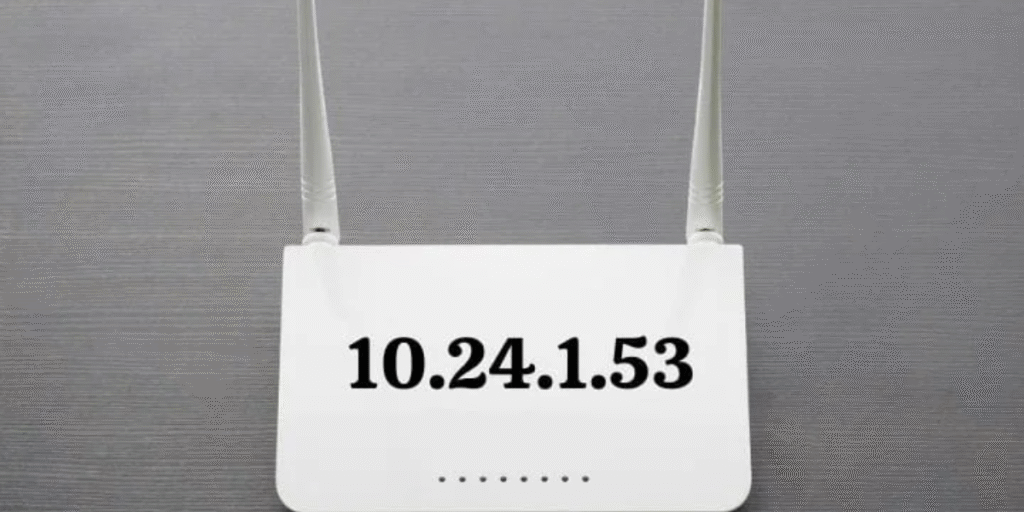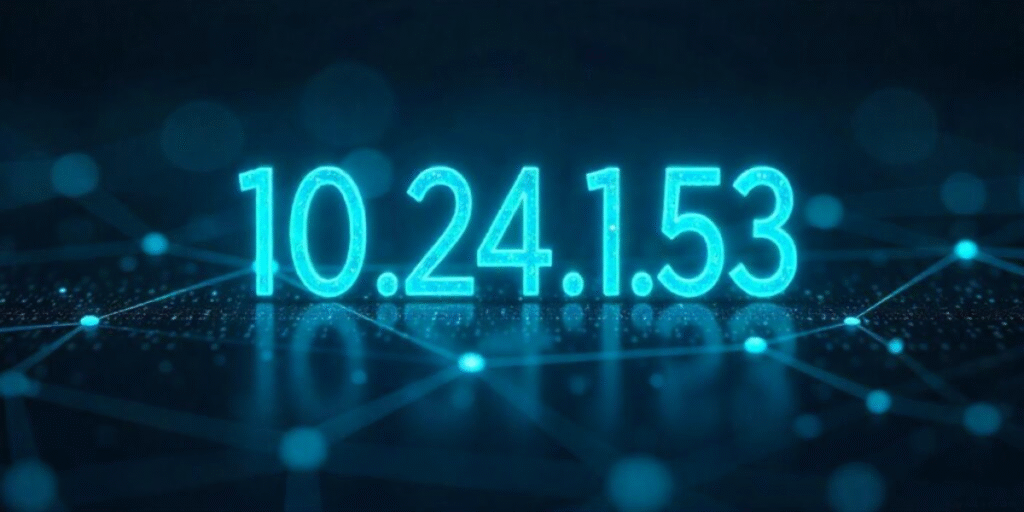IP addresses are essential for networking, ensuring that information reaches the right destination. An IP address like 10.24.1.53 sounds all “networky” to begin with. And whether you’re a network administrator, IT professional or just the average tech enthusiast, learning what this IP address means for your network can help you manage and troubleshoot it right.
What is 10.24.1.53?
10.24.1.53 is a private IP address as set by the Internet Assigned Numbers Authority (IANA) in the 10.0.0.0 – 10.255.255.255 range for use with private networks. Sense private Use Sense Addresses that private The following addresses are used by be to not considered use outside your network. In Other Words, Communication To Devices Using 10.24.1.53 Can Not Come From The Internet So This Improved Internal Security Too….
The Private IP address 10.24.1.53 is used in home networks, small and medium sized business networks, or as local address for an Internet provider’s routers. They allow multiple devices to communicate within a local network without wasting precious public ip addresses.
Why is 10.24.1.53 Important?

The significance of 10.24.1.53 is reflective of its value as a device IP ad An IP address is a unique number given to every single device connected to the net. With 10.24.1.53, administrators can easily recognize a device, grant access and inspect traffic flow.
For instance, in a company network a printer, server or employee computer may be given 10.24.1.53. To enable IT staff to set network parameters, diagnose problems and maintain security procedures. Without having distinct IP addresses similar to 10.24.1.53, network traffic would be a nightmare and you could suffer data loss or lost access.
Static vs Dynamic Assignment
An IP address like 10.24.1.53 may be statically or dynamically assigned:
- Static IP Assignment: You just give the device an IP address of 10.24.1.53 by writing it down in a piece of paper and configuring it manually, even becoming sure yourself no other host is using that address at the same time you configure it (doublesending). This means that the device will always have the same IP address, which for servers and shared printers is extremely important.
- Dynamic IP Assignment: With the help of protocols like DHCP (Dynamic Host Configuration Protocol), the network can allocate 10.24.1.53 to a device when it joins. This is a flexible approach but the IP address can change from time to time, and if not properly traced at hand, it may complicate network management.
Common Uses of 10.24.1.53
10.24.1.53 is used in many private networks:
- Internal Servers: A lot of organizations provide internal servers with static IP addresses like IP address in order to allow all network devices to frequently access such services, be it a database or a file storage system etc.
- Devices On The Network: Some of the printers and scanners around you use fixed (static) ip addresses such as IP address to facilitate communication.
- VPN Settings: Virtual Private Networks (VPNs) sometimes use private IP addresses such as IP address over secure connections to move traffic between remote offices and the main network.
- Home Networking: Sometimes tech enthusiasts will give their smart homes devices IPs like IP address to keep things organized on the network.
How to Find Devices Using 10.24.1.53
Network administrators have several different tools they can use to find devices that are IP address:
- Ping Command: You can use a basic ping test to check if some device using IP address address is okay on the network or not.
- ARP Table: Viewing the Address Resolution Protocol (ARP) table will reveal to which devices particular IP addresses are associated and that includes IP address.
- Network Scanners: Scanning tools like Nmap or Advanced IP Scanner help in listing out a full disclosure of all devices using IP address on a network.
Security Considerations
Although IP address is a private IP and not publicly accessible over the internet, it is still susceptible to security within our internal network! Here are some tips:
- Firewall Settings: Make sure the firewalls to which any device that uses IP address is subject are set to deny unauthorized access.
- Access Control: Restrict the devices that are permitted to establish communication to IP address to mitigate threats from inside.
- Monitoring: Regularly monitor traffic from IP address and to it for any inconsistencies, anomalies or oddities.
Handle 10.24.1.53 appropriately to ensure a safe, effective network environment!
Troubleshooting Issues with 10.24.1.53
If there are connectivity issues with the devices on 10.24.1.53, try these:
- Check for IP Conflicts: Verify that no other networking device is using the same IP address. Conflicts can disrupt communication.
- Check Subnet Settings: A device connected to IP address is configured with the wrong subnet mask, so you can’t reach it without routing when no gateway is available for a specific route in that range>%2
- Reboot Network Components: If all else fails, restart routers and modems as they can sometimes have temporary network issues.
- Upgrade Firmware: Old network device firmware can cause IP errors even with a statically assigned IP like 10.24.1.53.
Good troubleshooting would allow 10.24.1.53 to remain up and available.
Subnetting and 10.24.1.53
So it is important to know about subnetting when working with IP addresses such as IP address. Subnetting breaks down a network into smaller, more efficient networks with added security. For example, 10.24.1.53 might be on a subnet like 10.24.1.0/24 which means we should have up to 254 IP addresses that can be used within those network ranges Etc.. This architecture enables IT managers to control network traffic effectively and troubleshoot if necessary.
Best Practices for Using 10.24.1.53
If you would like to optimize 10.24.1.53, here are the best practices:
- Consistent documentation: Document which device is using IP address so you avoid conflicts and also for ease of troubleshooting!
- Static Assignment to Critical Devices: Utilize static IP addresses for servers and critical devices for facilitating consistent network communication.
- Network Segmentation: Logically group devices together using subnets to keep the network running smoothly.
- Regular monitoring: Have in place tools to monitor activity on 10.24.1.53 and be alerted if anything unusual occurs.
With these practises in place IP address can act as a stable backbone to your own private network!
Conclusion
In modern networking, each IP address is valuable and 10.24.1.53 is certainly one of them! Being a private IP address, it ensures both security and reliability in the internal network. Whether you’re routing the IP address to servers and hardware, or setting up VPNs and home networks; knowing how IP address works can help you optimize your network environment. Correct assignment, tracking and troubleshooting ensures IP address is a part of the healthy digital environment for everyone.
No matter if you are a novice who’s just learning the ropes of networking or someone working on a large-scale network, IP address is still key in maintaining really good connection as well as strong safeguarding features.



